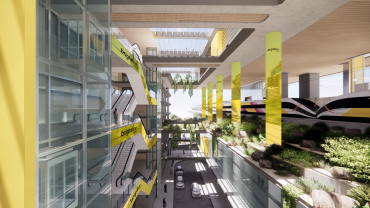Wagner Park’s Construction Halted Thanks to Lawsuit From Neighborhood Group
By Celia Young December 16, 2022 11:46 am
reprints
A $221 million flood-control project designed to protect Battery Park City from heavy storms and rising sea levels has been temporarily halted after a neighborhood group filed a lawsuit claiming the state agency in charge of the project failed to follow New York’s environmental review law.
In a lawsuit filed Wednesday in New York County Supreme Court, the Battery Park City Neighborhood Association claims the Battery Park City Authority’s (BPCA) massive South Battery Park City Resiliency plan to elevate Wagner Park and surround it with floodgates and barriers used inaccurate climate projections. The neighborhood group also alleged the BPCA failed to examine a cheaper project that would put flood protections behind Wagner Park.
The suit further claimed the BPCA duped residents by waiting until the public comment period ended in June to let them know the work would actually shrink the park’s central lawn by about 10 percent.
“The authority distracted and delayed the disclosure of accurate information until it ran out the clock,” the suit said. “[The] $221 million dollar plan needlessly demolishes this Picassoesque green oasis into a spiritless concrete-laden amphitheater with a reduced-sized horseshoe-shaped lawn.”
The BPCA temporarily halted the project after the suit was filed, although the agency denies any wrongdoing.
A spokesperson for the BPCA said the authority followed the state’s environmental review law, which requires examining all reasonable alternatives to a plan. Plus, the BPCA previously rejected the neighborhood association’s proposal — which places an inland flood behind the park, further from the river — due to engineering issues, The City reported.
“The South Battery Park City Resiliency project was planned and approved in full accordance with the law,” Nick Sbordone, a BPCA spokesperson, said in a statement. “We look forward to continuing the urgent work of protecting our community and Lower Manhattan from the devastation of future storms in the decades ahead.”
The BPCA planned to start construction on the park this summer, installing buried and exposed flood walls and gates stretching from the Museum of Jewish Heritage to Bowling Green Plaza and elevating Wagner Park to 19.8 feet above sea level. After the devastation Hurricane Sandy brought to the neighborhood, the project is part of a larger effort to protect Lower Manhattan from storm surges worsened by climate change and expected to threaten 37 percent of the area’s buildings in 30 years.
But the Battery Park City Neighborhood Association claims that the BPCA relied on a Federal Emergency Management Agency (FEMA) prediction of storm surge causing roughly 11.3-foot-tall waves during extreme weather, despite New York City previously finding those assumptions to be unreliable.
Celia Young can be reached at cyoung@commercialobserver.com.


